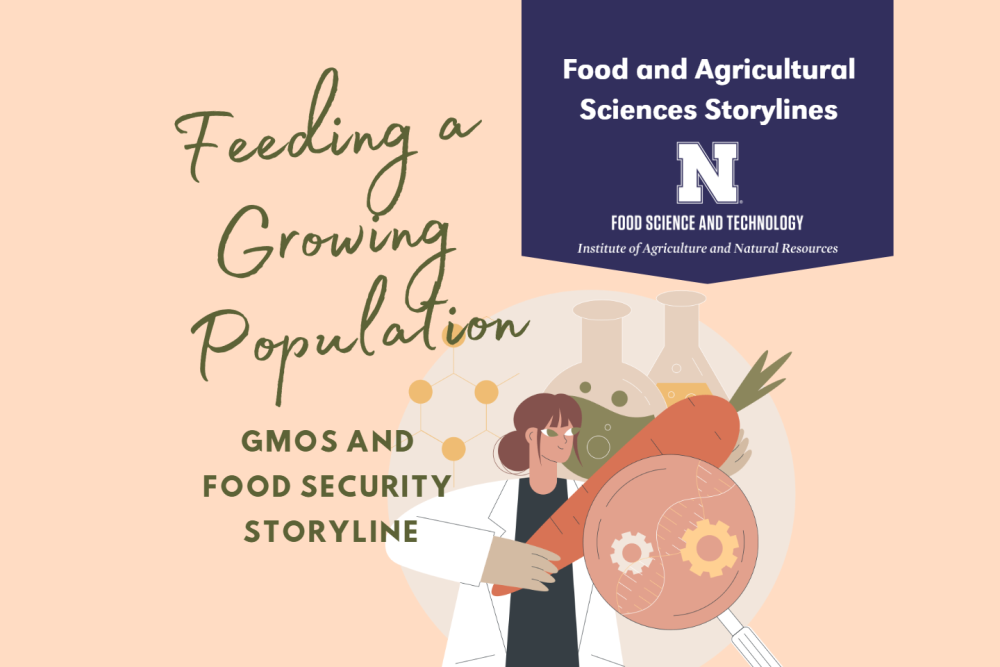
Feeding a Growing Population: GMOs and Food Security is a standards-aligned life science unit to help students understand GMOs and their benefits in feeding the future.
Overview
By using case studies of genetically modified (GM) crops bred for disease reduction and weed resistance, students will expand their understanding of GMOs and consider the benefits for feeding future populations. Students will be able to identify inheritance and trait variations after extracting DNA from plant sources and building a model of a DNA helix. The final assessment requires students to consider misconceptions of GMOs and create a compelling marketing piece for the general public. Within the unit, students will be introduced to different professional pathways as they research historical figures and their contributions to global food security.
Lesson 1
- Students will be introduced to the phenomenon of how to feed 9 billion people in the year 2050, and what measures need to be taken to work towards that goal. They will create a driving question board and begin to find solutions to the problem and learn about gaps that exist in the food production system.
- Students will be introduced to GMOs and identify how genes are changed and transferred to other organisms to solve problems such as pests and disease tolerance. We will discuss that the technology lends itself to many other applications such as added nutrition and solving the food gap.
- Students will figure out which sources of DNA make the best samples as they will have their choice of which source to use and experiment with. They will have the opportunity to compare their results with other groups in the class to determine the best sources.
- The students will figure out that all living things are linked together through the same base pairs of DNA, and how this knowledge has allowed scientists to genetically engineer crops to better society.
- Students will research a career related to biotechnology, and then learn about one of the greatest plant scientists in history who changed food availability around the world.
- Students will research a career field related to biotechnology and learn about the impact of these careers on society.
- Even with so many advances in technology, the public still fears genetic engineering of food. Students will need to determine how to share a more positive message about feeding the world through technology.
Curriculum Connections
Next Generation Science Standards
-
HS-LS1-1: Construct an explanation based on evidence for how the structure of DNA determines the structure of proteins, which carry out the essential functions of life through systems of specialized cells.
-
HS-LS3-1: Ask questions to clarify relationships about the role of DNA and chromosomes in coding the instructions for characteristic traits passed from parents to offspring.
-
HS-LS3-3: Apply concepts of statistics and probability to explain the variation and distribution of expressed traits in a population.
-
HS-LS4-3: Apply concepts of statistics and probability to support explanations that organisms with an advantageous heritable trait tend to increase in proportion to organisms lacking this trait.
-
HS-ETS1-1: Analyze a major global challenge to specify qualitative and quantitative criteria and constraints for solutions that account for societal needs and wants.
-
HS-ETS1-2: Design a solution to a complex real-world problem by breaking it down into smaller, more manageable problems that can be solved through engineering.
-
HS-ETS1-3: Evaluate a solution to a complex real-world problem based on prioritized criteria and trade-offs that account for a range of constraints, including cost, safety, reliability, and aesthetics as well as possible social, cultural, and environmental impacts.